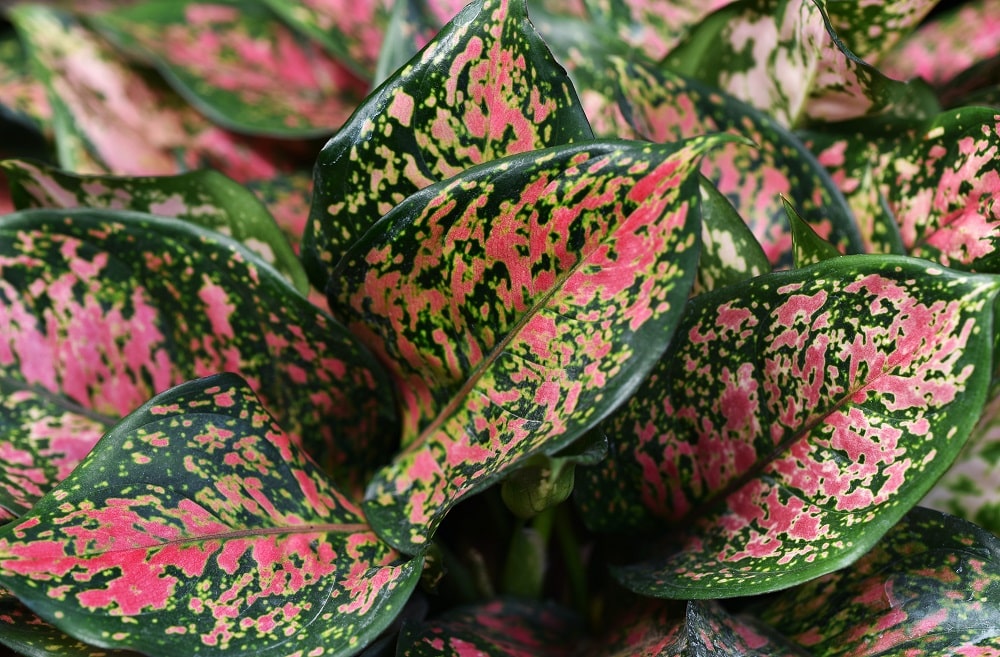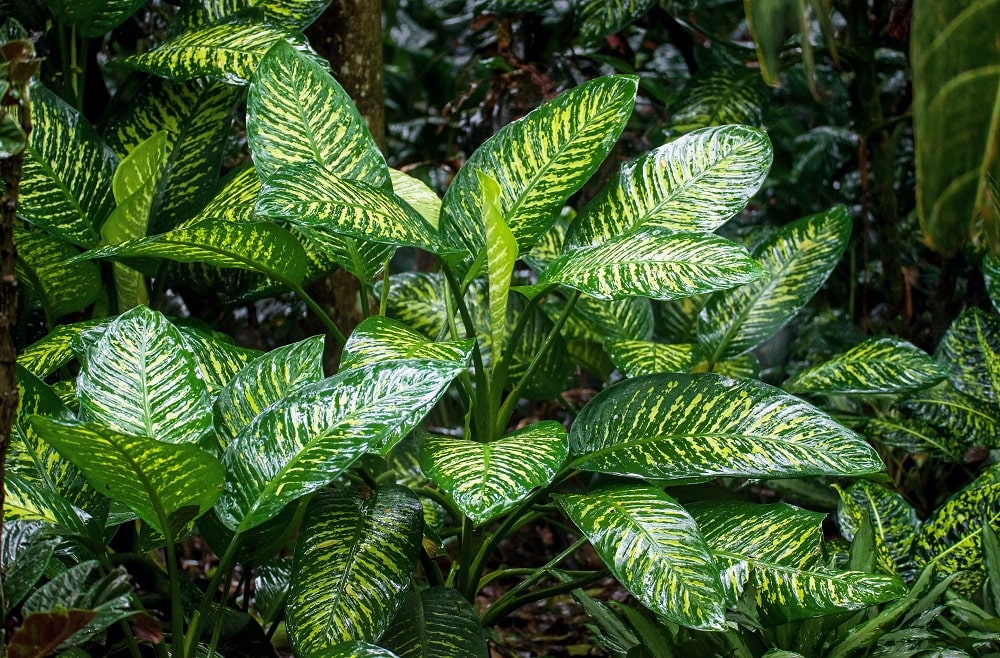I have an obsession with growing different types of houseplants. But Chinese evergreen happens to be my favorite indoor plant due to its easy care requirements.
When I started growing the aglaonema plant five years ago, I desired to raise a healthy houseplant. But I encountered several Chinese evergreen problems.
I noticed brown spots on Chinese evergreen leaves more often. I never bothered investigating the cause of the problem until I lost my favorite houseplant.
I decided to research the various causes of the aglaonema leaf problems. Chinese evergreen leaves turning brown and yellow happen to be a rampant issue today.
So, why are my Chinese evergreen leaves turning brown? Possible causes are prolonged exposure to direct sunlight, over-fertilization, low humidity, temperature stress, under-watering, overwatering, and poor water quality.
The rule of thumb is to identify the cause and adopt the right course of action to combat the green leaves from turning brown. But there is no need to freak out since you can resolve the issue without facing any challenges.
I have written a Chinese evergreen plant care guide to help you learn how to grow and maintain the houseplant like a professional gardener. Take the time to read through it for better plant growth and health.
You May Also Like: Why Are My Aglaonema Leaves Turning Yellow?

Causes and Solutions for Chinese Evergreen Leaves Turning Brown
Overwatering
Chinese evergreens are the best houseplants for beginners. Growing and caring for the aglaonema plant is super easy when compared to other indoor plants.
Many gardeners make mistakes when it comes to watering the houseplant. Improper watering happens to be the leading cause of any indoor plant death.
Chinese evergreens are highly sensitive to watering. A damp environment makes the plant suffer from root rot. The condition usually poses a significant threat to the plant’s health and growth.
Root rot occurs as a result of no proper drainage when the plant has been overwatered. Stagnant water inhibits root aeration and absorption of vital nutrients.
Leaves yellowing and browning are the initial signs of overwatering issues. Failure to correct the problem on time will result in the death of your favorite houseplant.
I recommend re-potting the plant to save it. Inspect the root systems and use sterilized scissors to cut the affected roots.
Transplant the plant into a fresh potting mix and new container. Consider a watering schedule to avoid overwatering your houseplant.
The best option is to insert your index finger in the soil to check the moisture content. Water the plant when the soil is dry or moisture content is low.
Underwatering
Gardeners with involving day jobs usually forget to water their houseplants. Water is a crucial component for plant growth and health.
Photosynthesis usually takes place in presence of sunlight and water. Water helps to dissolve synthesize food before transporting it to other parts of the plant.
Underwatering will make your Chinese evergreen leaves droop and turn brown. Keep in mind that the browning of leaves is a sign of wilting and an early indicator of plant death.
Consider inserting your index finger in the potting mix to check the moisture content before watering. Introduce a healthier watering routine to save your plant from wilting or dying.
Keep in mind that watering houseplants depend on the season. Water Chinese evergreens twice or thrice during the growing season (spring and summer). In winter, water the indoor plant once.
Adopting a healthier watering routine will help to avoid overwatering your ornamental plant. The technique will give you a humble time to focus on other issues.
You May Also Enjoy: 20 Stunning Aglaonema Varieties (With Pictures)
Low Humidity
Chinese evergreens are tropical plants native to Southeast Asia. The native habitat experiences high humidity levels to enhance better growth and stunning foliage.
Low humidity makes the aglaonema foliage curl and begin to turn brown after an extended period. If the issue is not resolved, the houseplant will start wilting.
The optimum humidity requirement for the Chinese evergreen plant is about 60%. Extremely high and low humidity is harmful to aglaonema plants.
Misting the aglaonema leaves with a spray bottle several times a day will save the Chinese evergreen from low humidity. But the plant will take a little longer to regain the stunning foliage.
Another alternative is to take the houseplant to the bathroom where the humidity level is high. The brown leaves will fall off, and new beautiful leaves will sprout.
Over-fertilization
Chinese evergreens are not heavy feeders. The houseplant can still survive and thrive without the need for fertilization.
But the indoor growing condition does not offer certain vital nutrients as their natural habitat. The application of liquid fertilizer becomes important to provide all the necessary nutrients.
Many gardeners end up over-fertilizing their indoor plants without knowing. Too much salt buildup around the roots causes the aglaonema leaves to turn brown.
I recommend fertilizing the houseplant once a month during the growing season (spring and summer). Aglaonema plants are dormant in winter, and they do not need fertilizer at all.
If your Chinese evergreen leaves are turning brown due to over-fertilization, consider re-potting or flushing out the soil with plenty of distilled water.
You Can Also Read: Why Is My Aglaonema Dying?
Temperature Stress
Chinese evergreens are too sensitive to temperature changes, and they prefer a temperature range of 70-85oF. Any temperature dynamics pose stress to the houseplant.
Extremely high temperatures cause the leaves of your Chinese evergreen to scorch and wilt. The foliage color change inhibits the houseplant from undertaking physiological activities.
You should also note that extremely cold temperatures can cause your plant to perish. Maintaining an optimum temperature that favors indoor plants can be challenging.
I recommend buying a digital thermometer to help measure the indoor temperature more often. It will help maintain the temperature requirement for your houseplant.
Keep your Chinese evergreen plant away from the heaters or radiators. It will help protect your aglaonema leaves from turning brown.
Excess Direct Sunlight Exposure
Chinese evergreens are native to the tropical rainforest. These plants grow under the canopy and end up receive low sunlight rays due to the shade.
Subjecting the houseplant to prolong direct sunlight exposure will result in the formation of brown leaves due to sunburn.
Aglaonema plants prefer bright indirect sunlight for 2-3 hours a day. Too much and low sunlight is harmful to the houseplant.
I recommend using artificial lighting over natural light to avoid scorching your aglaonema leaves. Chinese evergreens can tolerate low lighting conditions for some period.
Poor Water Quality
Tap water is not ideal for watering your houseplant. It contains some chemical compounds that build upon the aglaonema foliage to cause brown spots and patches.
I recommend the use of distilled water due to the lack of chemical compounds. It will help to prevent aglaonema leaves from turning brown after watering.
Another option is to use rainwater. The water is ideal if you live in an area that does not experience air pollution from industries.
Transplant Stress
Chinese evergreen is a slow-growing houseplant. But transplant is inevitable since it can be due to saving the plant from root rot.
The houseplant takes a little longer to adjust to the new potting mix. The old foliage will start turning brown and fall off after some time.
There is no need to raise concern since it is due to transplant stress. Be sure to provide proper growing conditions to avoid harming your favorite plant.
Pest Infestations and Diseases
Chinese evergreens are highly prone to pests and diseases. Pest infestations and diseases could be responsible for the aglaonema leave turning brown.
The common pests that attack aglaonema plants are mealybugs, spider mites, whiteflies, and thrips. These pests pierce the leaves to suck cell-sap and cause brown spots.
I recommend the use of horticultural soap to clean the foliage and eliminate pests. The plant leaves will take time to heal and recover from the browning issue.
Always use fungicide for aglaonema attacked by bacterial and fungal diseases. It is the best treatment for houseplants attacked by bacterial leaf blight and fungal disease.
You May Also Read: Why Are My Hoya Leaves Turning Yellow?

Frequently Asked Questions
Why Are My Chinese evergreen Leaves Curling?
Aglaonema leaves curling could be due to direct sunlight exposure, pests, diseases, low humidity, temperature stress, and improper watering. Always identify the cause and adopt the correct measures to fix it.
Why Is My Chinese evergreen drooping?
Chinese evergreens are hardy tropical plants. These plants thrive under the canopy to avoid direct exposure to sunlight. Aglaonema foliage becomes droopy due to direct sunlight exposure, temperature stress, low humidity, and pest infestations.
What Causes Chinese evergreen Stem Rot?
Improper watering and pest infestation are the causes of Chinese evergreen stem rot. Treating the plant with horticultural soap will help to get rid of pests to prevent stem piercing. The piercing usually creates a conducive environment for the bacterial and fungal invasion to cause stem rot.
You Can Also Read: Why Are My Chinese evergreen Leaves Curling?
In Conclusion
The health of the Chinese evergreen plant is influenced by several factors. Improper growing conditions will make the houseplant display yellow and brown leaves.
The possible factors that make Chinese evergreen leaves turn brown are improper watering routine, low humidity, temperature stress, and pest infestations.
Ensure your Chinese evergreen plant is placed in an area that receives bright indirect sunlight and high humidity. These two growing conditions make sure the houseplant stays healthy throughout.
You Can Also Read: Why Is My Poinsettia Wilting?
More Sources and References
- Emma Erler. Chinese evergreen Leaf Problem. The University of New Hampshire.
- Christine. E. The Plant Common Issues. Lowa State University.
- Editor. Chinese Evergreen Leaves and Flowers. Knowledgebase.
